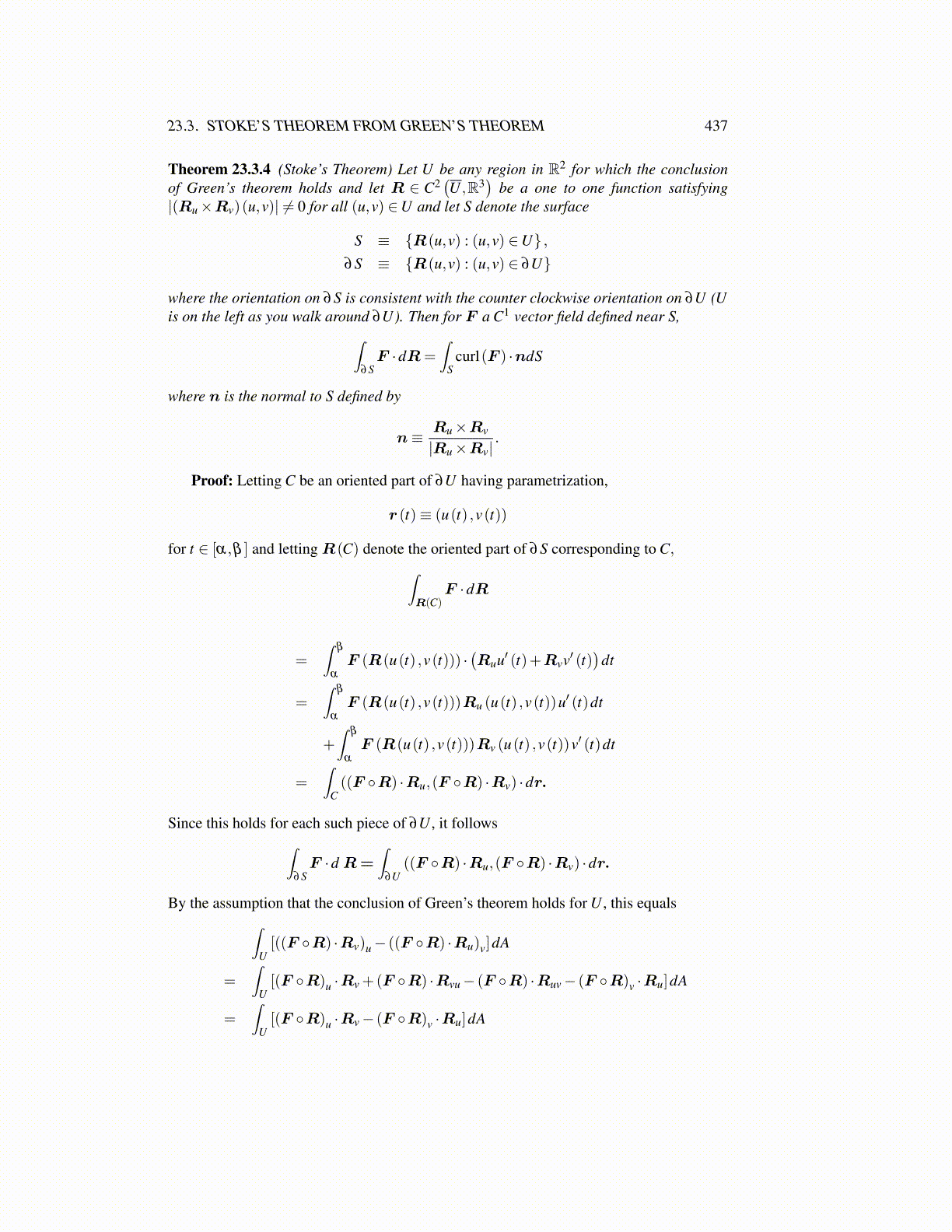
23.3. STOKE’S THEOREM FROM GREEN’S THEOREM 437
Theorem 23.3.4 (Stoke’s Theorem) Let U be any region in R2 for which the conclusionof Green’s theorem holds and let R ∈ C2
(U ,R3
)be a one to one function satisfying
|(Ru×Rv)(u,v)| ̸= 0 for all (u,v) ∈U and let S denote the surface
S ≡ {R(u,v) : (u,v) ∈U} ,∂S ≡ {R(u,v) : (u,v) ∈ ∂U}
where the orientation on ∂S is consistent with the counter clockwise orientation on ∂U (Uis on the left as you walk around ∂U). Then for F a C1 vector field defined near S,∫
∂SF ·dR=
∫S
curl(F ) ·ndS
where n is the normal to S defined by
n≡ Ru×Rv
|Ru×Rv|.
Proof: Letting C be an oriented part of ∂U having parametrization,
r (t)≡ (u(t) ,v(t))
for t ∈ [α,β ] and letting R(C) denote the oriented part of ∂S corresponding to C,∫R(C)
F ·dR
=∫
β
α
F (R(u(t) ,v(t))) ·(Ruu′ (t)+Rvv′ (t)
)dt
=∫
β
α
F (R(u(t) ,v(t)))Ru (u(t) ,v(t))u′ (t)dt
+∫
β
α
F (R(u(t) ,v(t)))Rv (u(t) ,v(t))v′ (t)dt
=∫
C((F ◦R) ·Ru,(F ◦R) ·Rv) ·dr.
Since this holds for each such piece of ∂U , it follows∫∂SF ·d R=
∫∂U
((F ◦R) ·Ru,(F ◦R) ·Rv) ·dr.
By the assumption that the conclusion of Green’s theorem holds for U , this equals∫U[((F ◦R) ·Rv)u− ((F ◦R) ·Ru)v]dA
=∫
U[(F ◦R)u ·Rv +(F ◦R) ·Rvu− (F ◦R) ·Ruv− (F ◦R)v ·Ru]dA
=∫
U[(F ◦R)u ·Rv− (F ◦R)v ·Ru]dA